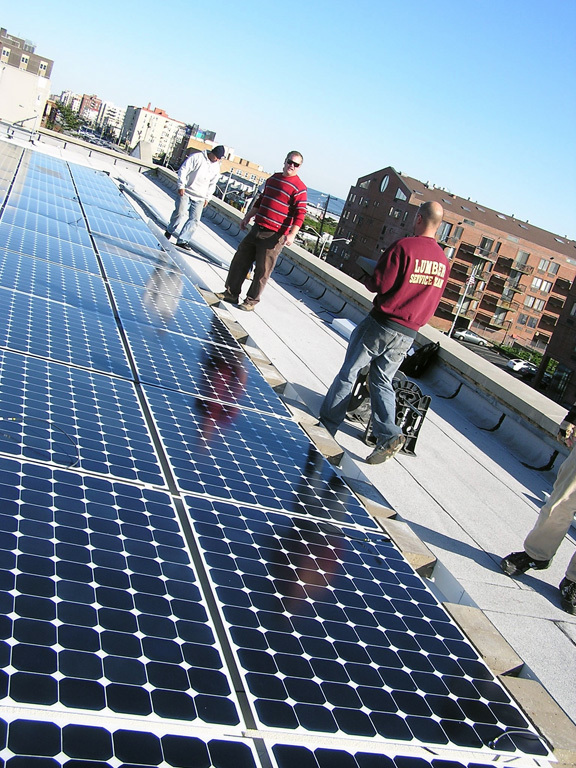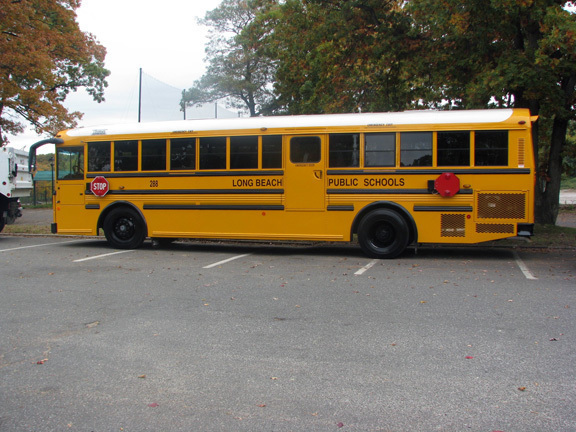Getting schooled on green energies
Whether they are looking to save money or just be more environmentally friendly, schools in Long Beach are expanding efforts to use alternative energy sources.
Long Beach Catholic School on West Broadway began installing solar panels on the roof of the school gymnasium on Oct. 19. “We are directly across the street from the ocean,” said Principal Veronica Danca. “We know what a gift we have in this wonderful environment that we are in and we want to do our best to keep it that way and make it better.”
Danca said making the school more green became a focus in Sept. 2008 and will not only help the environment, but help decrease the school’s utility bill. This year the school, which relies on tuition, outside funds and fundraising, budgeted $65,000 for utilities.
According to the Diocese of Rockville Centre, the two systems are expected to produce 30 kilowatts of electricity for the school and neighboring St. Ignatius Martyr Church, saving the school and parish an estimated $5,000 collectively in utility costs each year. The school was approved for funding and a rebate program through Long Island Power Authority (LIPA) to offset the cost of installing the system. LIPA will refund the school $4.50 per watt for the first 10 kilowatts for each of the systems and $2.50 per watt for the remaining capacity.
Long Beach Catholic, a kindergarten-to-8th-grade school, will also integrate the panels into its math and science curriculums.
“The children will be able to calculate how much energy was saved in any specific time,” Danca explained. “In science they’ll be able to understand the process of electricity and how solar panels are working.” While the Long Beach School District has not installed any solar panels, the district boasts the largest fleet of compressed natural gas (CNG) schools buses on the island. “Overall the fleet is one of the cleanest running in the state,” said Transportation Director Robert Sambo.
Sambo said of the 42 buses used daily, 28 run on the clean fuel. A significant portion of the funding to purchase the buses, retrofitting existing diesel engines and installing a pumping station came from $2 million in federal and state grants over the years. The district also receives a rebate from the federal government on the purchase of natural gas that amounted to $45,000 last year. Sambo said that his goal is to have 95 percent of the district’s fleet to run on natural gas.
He said that until CNG pumping stations become as accessible as gasoline, the district will have to keep some diesel buses. “You need to keep some diesel-running buses because if you go off the island or upstate you aren’t going to be able to fuel,” Sambo explained. He noted that the exhaust systems on those buses have been upgraded and run on a low sulfur diesel, making them as clean as
possible.
The district was recently recognized by the Greater Long Island Clean Cities Coalition and given its annual Trailblazer Award, which is given to member organizations who demonstrate an effort to use alternative fuels in its vehicles.
Comments about this story? JKellard@
liherald.com or (516) 569-4000 ext. 213.

 50.0°,
Overcast
50.0°,
Overcast 







